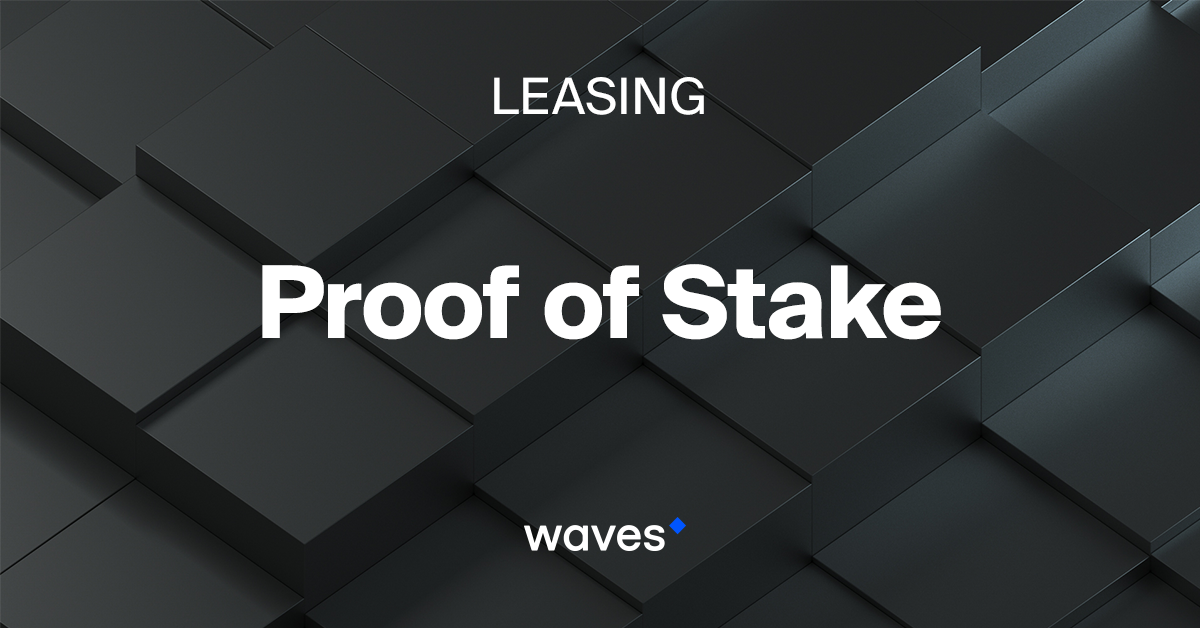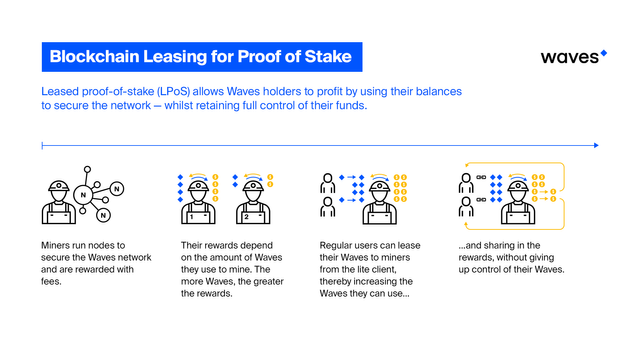Blockchain Leasing For Proof Of Stake

In a previous article we looked at the differences between Proof of Work (PoW) and Proof of Stake (PoS) mining. Briefly, cryptocurrency networks are secured by miners, who process transactions and prevent fraud. Miners ‘back’ their activity with a scarce resource. In the case of PoW, that’s energy. For PoS, it’s the platform’s coins themselves. PoS systems may also allow their users to lease their coin balance to miners, thereby playing a part in securing the network and gaining some of the rewards without the overheads of having to run a full node for themselves.
Whether a blockchain network is maintained by Proof of Work or Proof of Stake, having sufficient resources to ensure the platform’s security is critical. For PoW, that means hashrate: the number of calculations per second collectively made by miners. The greater this number, the more expensive it is for any single entity to attack the protocol, since they would need more processing power than everyone else put together.
For Proof of Stake, it means ensuring that a sufficient proportion of coin holders use their balance to mine. (Miners are often called ‘forgers’ or ‘stakers’ in PoS systems.) If only 10% of coins in total are used to secure the network, it might be possible for a large holder like a rogue exchange to use their stake to alter the blockchain in their favour.
Miners’ incentives
Incentivising holders to use their stake to mine is therefore an important aspect of setting up a PoS blockchain ecosystem. Miners receive fees from transactions submitted for each block, and in some cases further rewards — the Waves platform, for example, has a dedicated token called Miners’ Reward Token (MRT) that is designed to give miners a second source of income until the volume of transactions reaches a certain threshold.
However, this still does not guarantee high levels of participation. Many coin holders may not be comfortable with the technical side of setting up a node, or may be unable to access the infrastructure they need for one reason or another (hosted servers, storage, bandwidth etc). Moreover, small holders may simply find it uneconomical: there are fixed as well as ongoing costs to mining, and if your balance isn’t large enough these will outweigh the rewards. Finally, specific protocols may not allow nodes to mine with a small balance: there can be edge cases where this opens up a potential attack vector.

Mining pools
Just as bitcoin and other PoW cryptos have mining pools for miners to share hashrate and receive small regular payout in proportion to the processing power they bring to the network, so PoS coins may share resources. In this instance, though, smaller holders can lease their balance to a full node, again receiving rewards in proportion to the coin balance they contribute. For example, if a pool has a total size of 100,000 coins, a holder who leases 1,000 coins may receive 1% of rewards (subject to the terms stated by the pool owner).
When leasing a balance, the coins are locked but remain in full control of the owner. They are not transferred to the pool but stay in the same address – just remaining unspendable until the lease is cancelled. Leasing and cancelling a lease can typically be done from an ordinary wallet, with no additional technical expertise needed.
Different mining pools have different payout terms. Some take a fee, some don’t, considering it a service to the community and network. Some incorporate a pool into a wider business model or use their sites and presence in the crypto world to generate revenues in other ways. Some of Waves’ mining pools even have their own tokens, rewarding those who lease their balances in a share of transaction fees, MRT and another token.
The effect overall is to raise platform users’ participation in mining. This increases network security, increases the number of long-term holders, and thereby increases the value of the coin for everyone. It’s win/win/win.
Join Waves Community
Read Waves News channel
Follow Waves Twitter
Subscribe to Waves Facebook